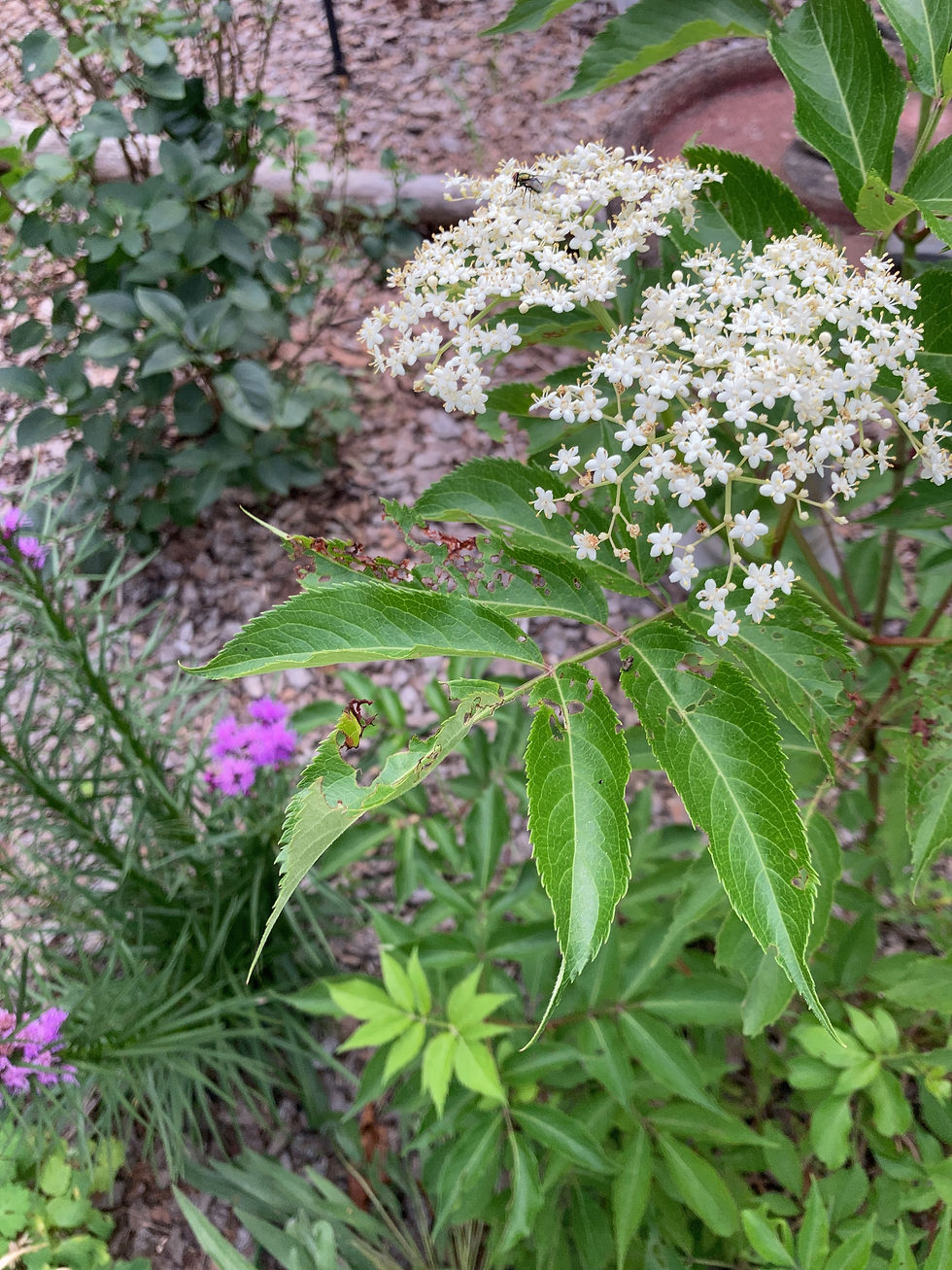The Mini Meadow Experiment: Year Two
- Jill Hofbauer

- Sep 4
- 2 min read
Updated: Sep 5
Progress continues in creating a pollinator-friendly haven.

It is pretty exciting to think that we might be on the cusp of an important environmental shift as more and more people take part in the native plant movement and rethink their landscapes with pollinators in mind.
Just looking around my community and others in Ohio this past year, I have observed a noticeable increase in pollinator-friendly spaces, native plant sales, free seed libraries and educational events pertaining to native plants, and have been pleasantly surprised to discover many book titles and even art focused on the subject. From one neighbor who is spearheading a 5-acre meadow project on her church’s property in Licking County, to old friends who have created a pollinator-friendly rain garden on their city street corner in Bexley, it can’t be coincidental that more butterflies, moths and caterpillars seem to be appearing everywhere.
Last September I shared my first-year experience installing a mini pollinator meadow on our property, and I’m happy to report that year two has been even more rewarding. Throughout this growing season, I have identified new native plants and have seen the meadow grow to heights nearing 6 feet tall. Fawns and baby bunnies have sought shelter in the brushy vegetation, and on a sunny day there is a rhythm to the sounds and movement of the various insects foraging and nesting among the flowers and grasses.
When launching this meadow project, I was given a catchy phrase by community resources:
“The first year it sleeps. The second year it creeps. The third year it leaps.”

In this "creeping year,” more perennial plants have established—especially yellow varieties such as Black-Eyed Susans, Lanceleaf Tickseed and Oxeye Sunflower, with the promise of more color to come from sporadic Beebalm, Purple Coneflower and New England Aster popping up.
While some re-seeding was necessary in bare spots at the start of spring, and weed management and the removal of invasive, non-native plants continues to be an ongoing part of maintenance—especially as I learn to become more educated on plant varieties— my involvement in year two has been far less demanding. Taking a quiet walk through the meadow is one of my favorite ways to start or end a day.
Below are photos of the this year's meadow progress and some of the other pollinator-friendly spaces we've added to our property in recent years.
Milkweed is essential to Monarchs as a food source to caterpillars and a host plant for butterflies to lay their eggs.

This Joe Pye Weed has been a pollinator powerhouse all season with beautiful impact in my patio garden, along with the nearby Elderberry and Blazing Star shown below.

These are some of the meadow plantings from year two.
I can't wait to see what year three will bring.
Have you incorporated native plants into your landscape or come across any useful resources? What ways have you seen the native plant trend reach your community? Let's help to keep the momentum going—please reach out and share your experience!
Until Next Time,
—Jill Span Hofbauer
For friends and neighbors in Licking County, check out the Meadows for Monarchs Project if you are interested in local resources!















So beautiful!! Can't wait to see in person!
This is the encouragement I needed to read today! More bunnies and butterflies, forever. <3